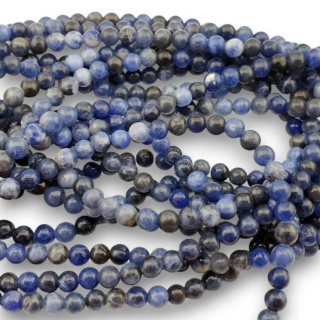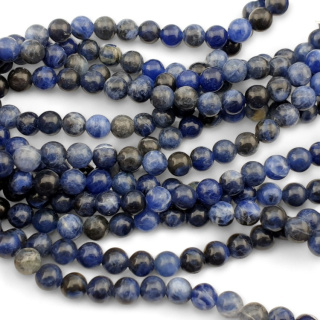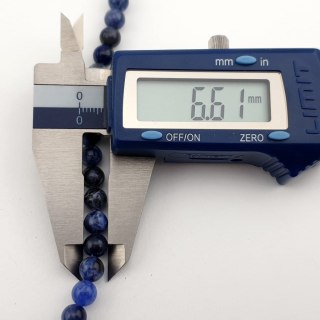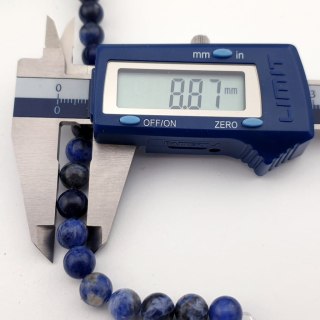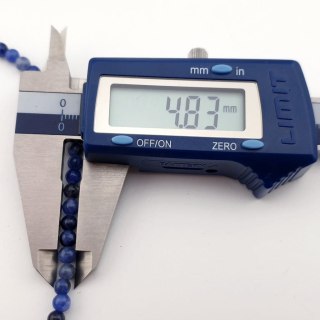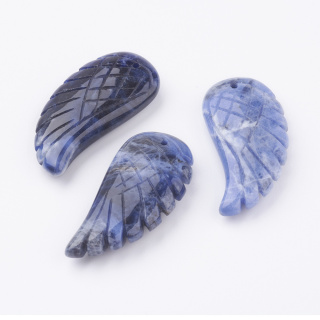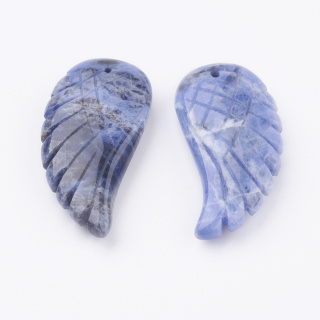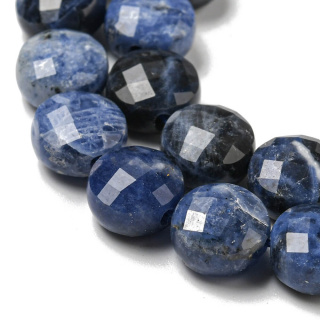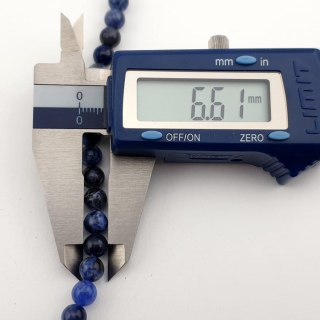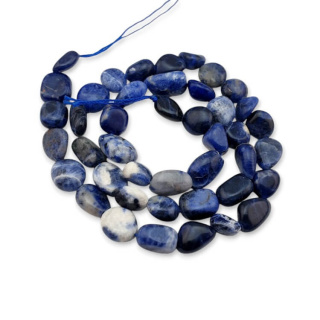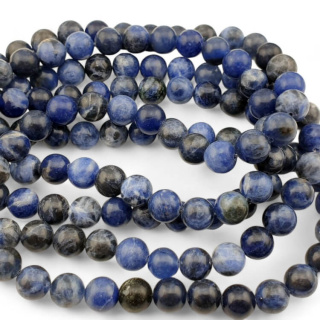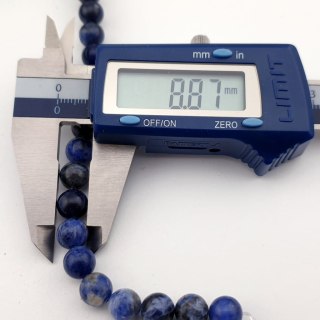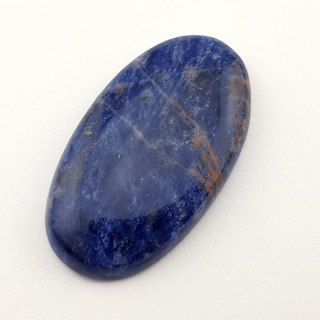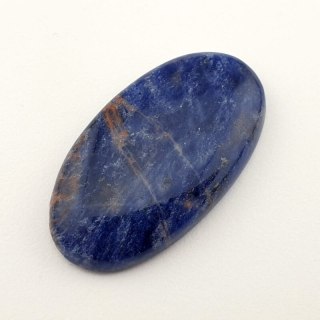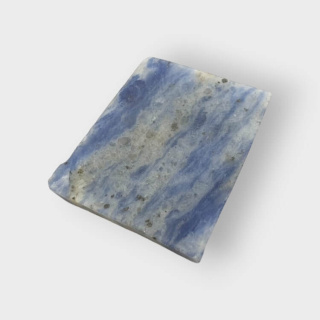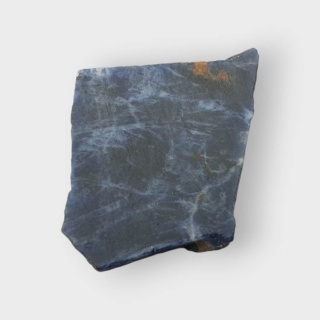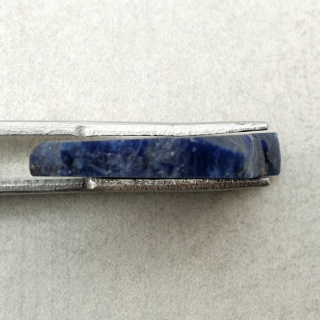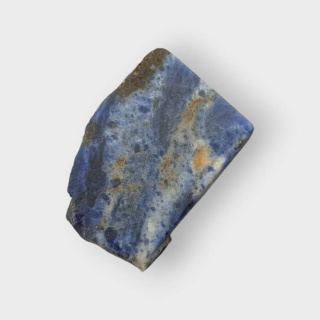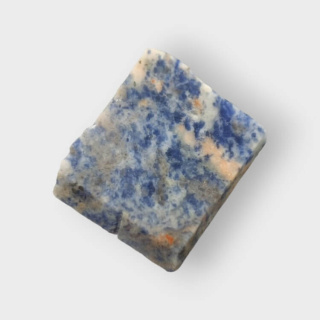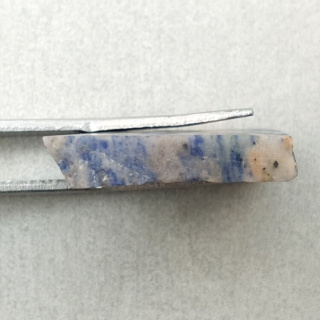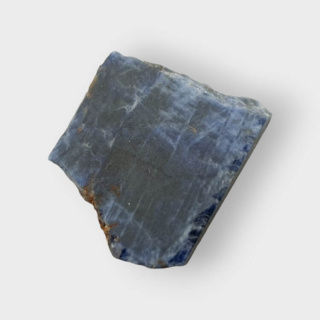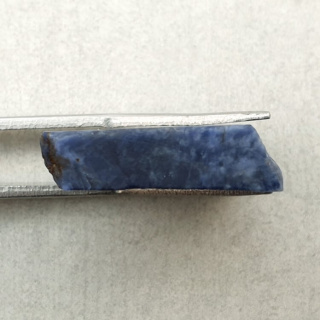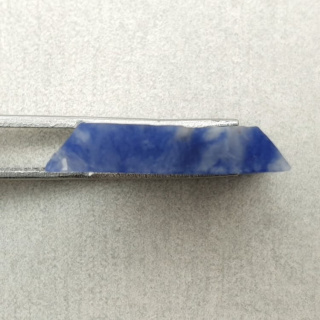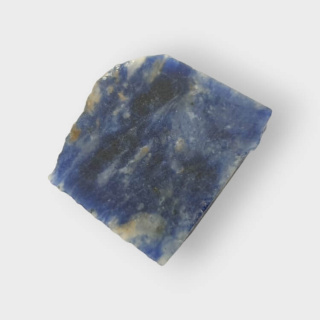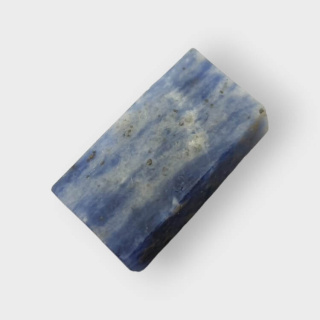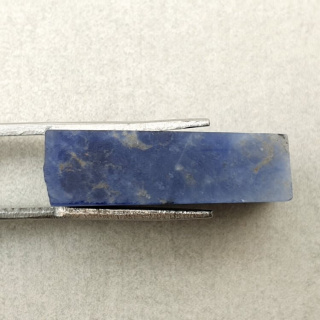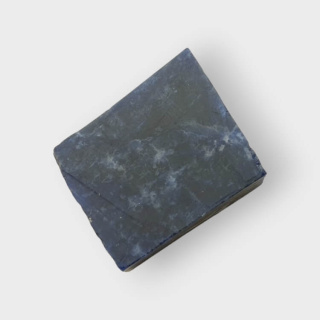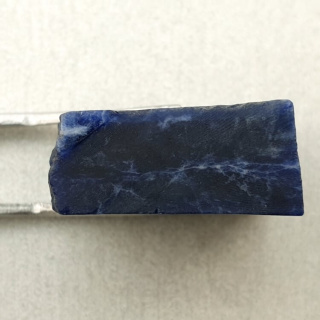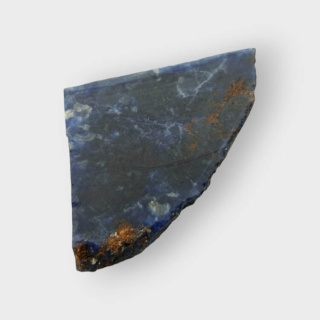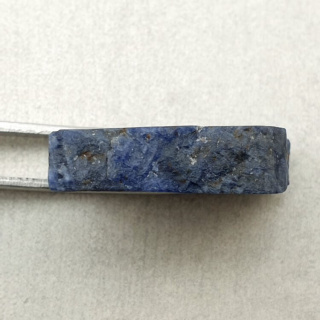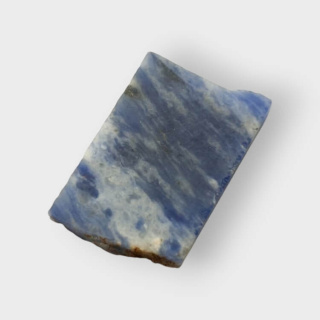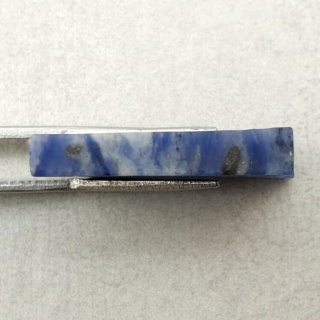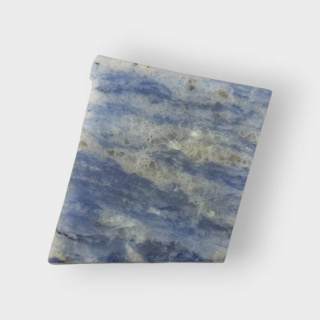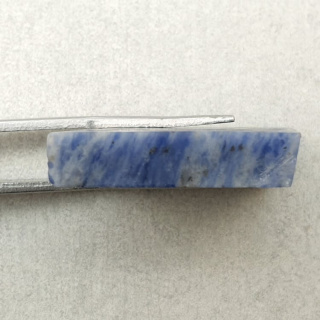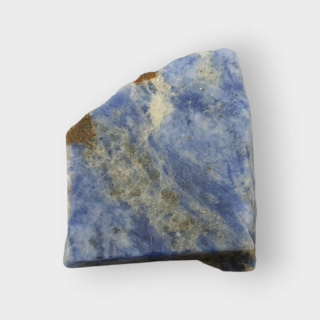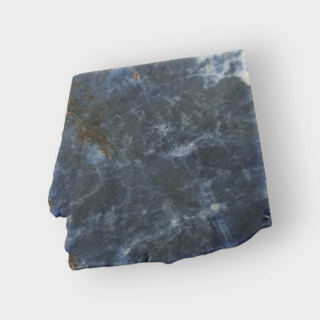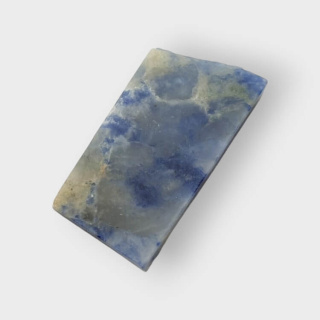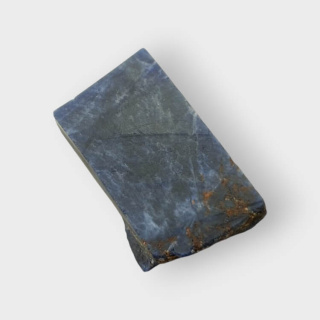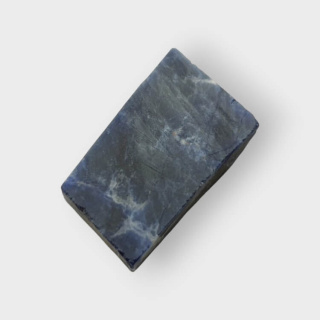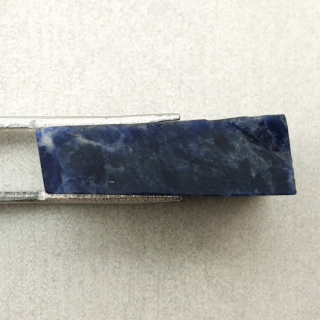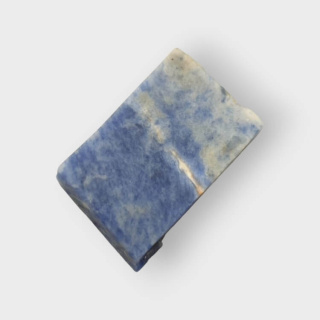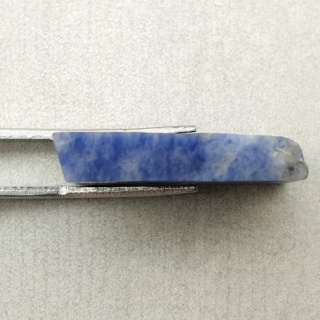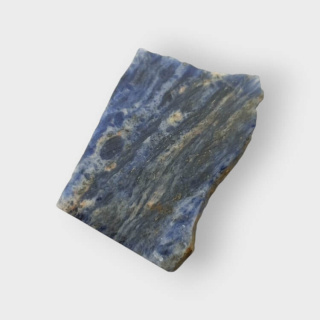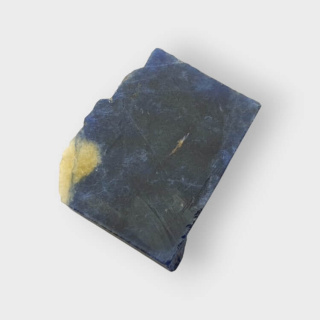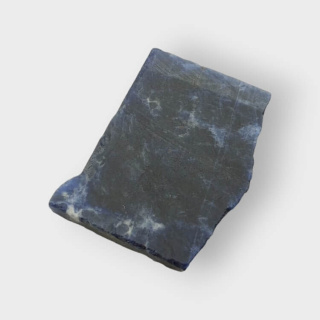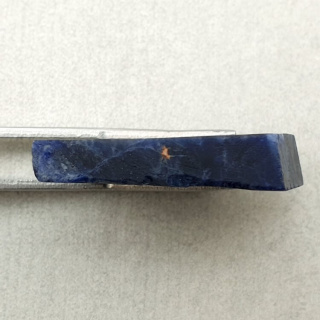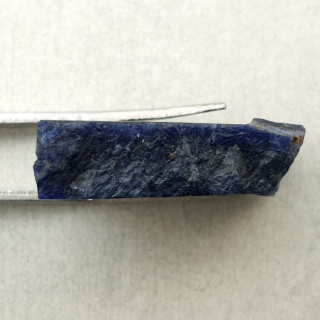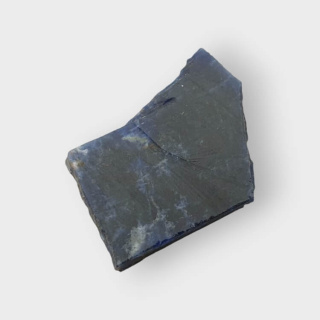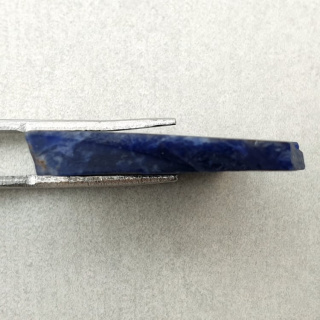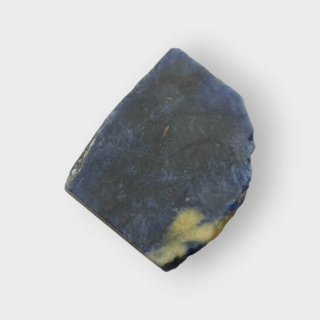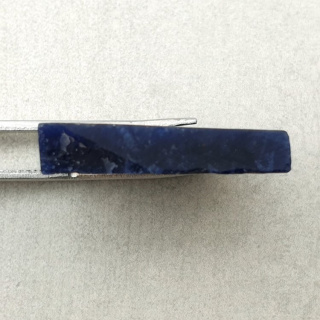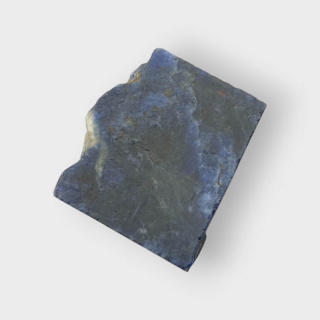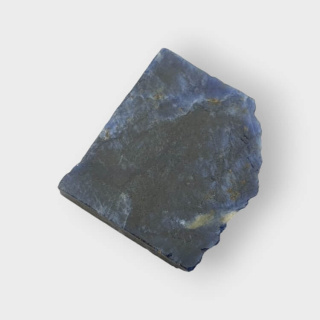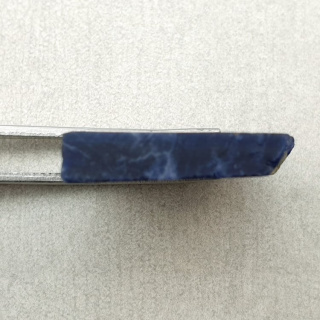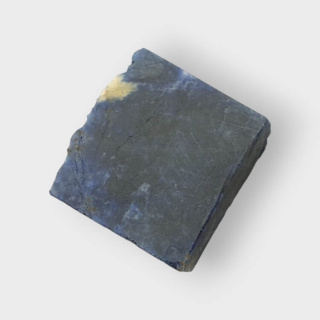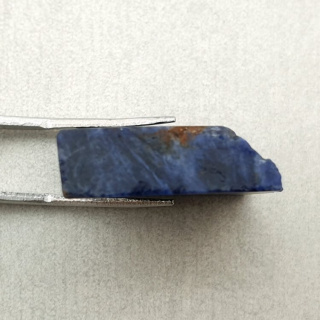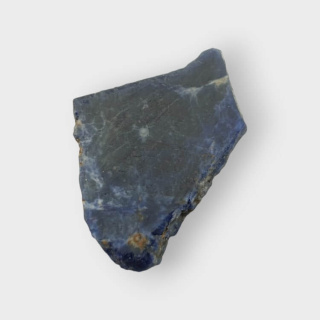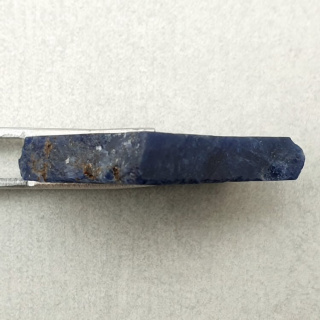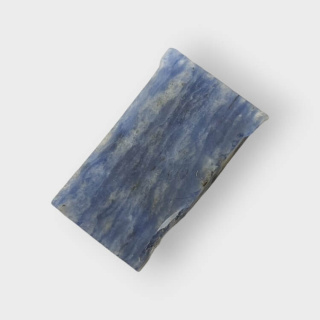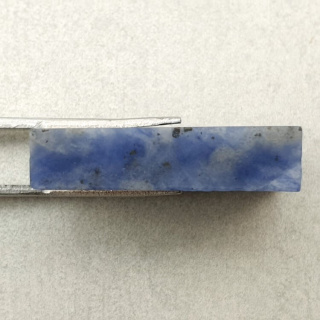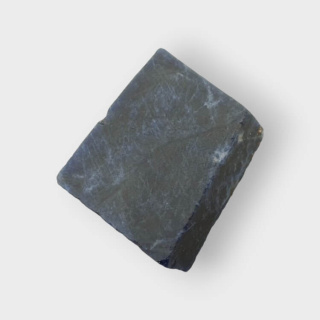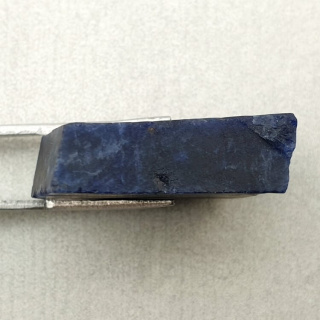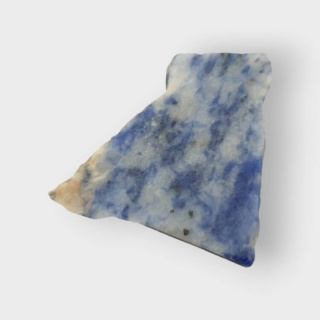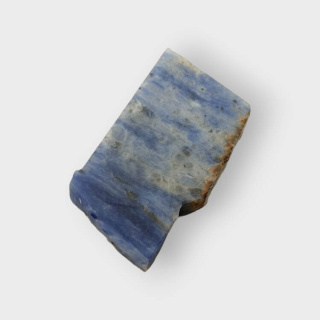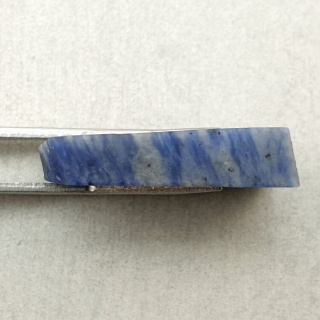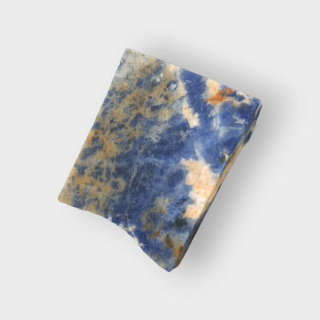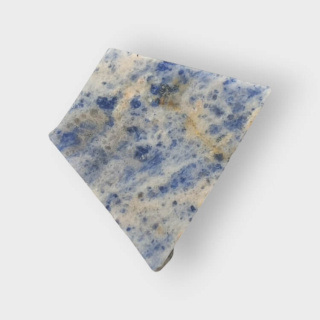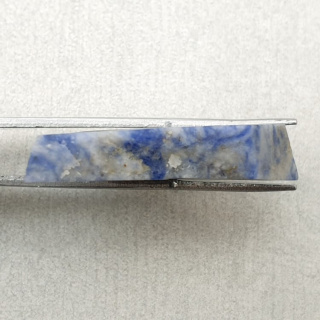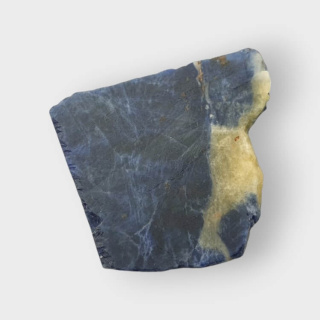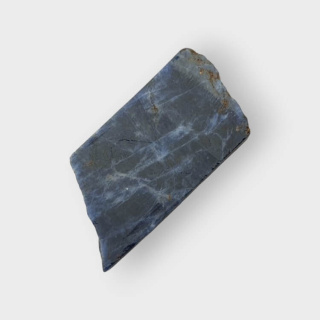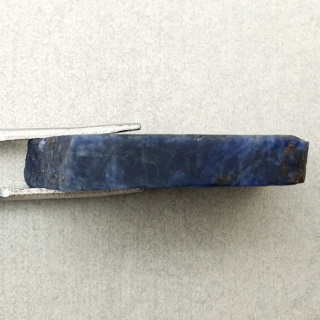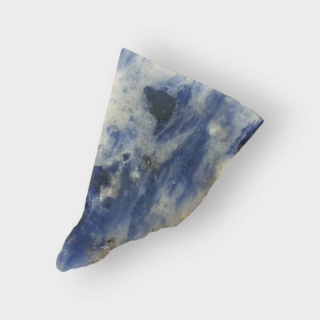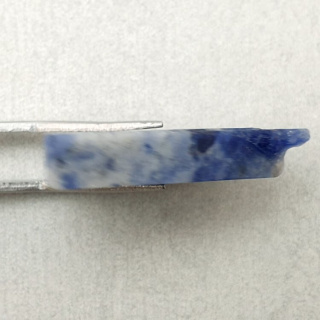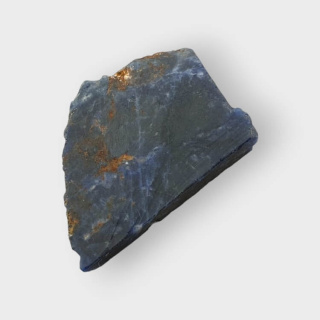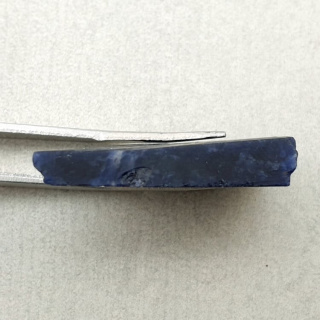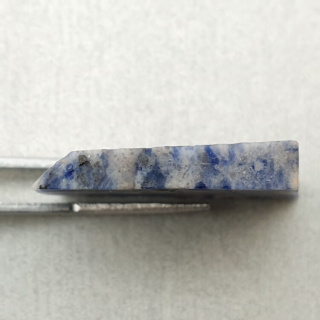Sodalite is a stone with a beautiful blue color.
Number of products : 198Sodalite is a semi-precious stone with a beautiful blue color. Sodalite is a mineral from the silicate group, which contains sodium silicate and calcium chloride. It is relatively soft and has a Mohs hardness rating of 5.5-6.
Sodalite is popular in jewelry and arts and crafts due to its color and translucent structure. It can be cut into various shapes, such as round, oval, square, and triangular, allowing for a variety of patterns and designs.
Properties of sodalite – what kind of mineral is it and what are its physical properties?
Sodalite is a mineral from the silicate group, specifically from the silica silicate group. It is classified as a tectosilicate or network mineral. Here is some key information about sodalite:
-
Chemical formula: Sodalite has the general chemical formula Na₈Al₆Si₆O₂₄Cl₂. This means that it consists mainly of sodium (Na), aluminum (Al), silicon (Si) and oxygen (O) atoms, and also contains chlorine (Cl).
-
Color: The blue color of sodalite is its most distinctive feature. This color can range from light blue to dark blue. Sometimes white spots or streaks may appear in sodalite rock.
-
Hardness: Sodalite has a Mohs hardness of approximately 5.5–6, which means it is moderately hard.
-
Luster: Sodalite has a vitreous luster that can be clearly seen on well-polished surfaces.
-
Crystal shape: Sodalite crystallizes in a regular pattern, and individual crystals can take the form of hexagons or dodecahedrons.
-
Transparency: In its natural state, sodalite can be transparent, translucent or even completely opaque, depending on the quality of the specimen.
-
Mirror: Sodalite has a distinct mirror on its broken surfaces, which is typical of minerals with a vitreous luster. Mirror: Sodalite has a distinct mirror on its broken surfaces, which is typical of minerals with a vitreous luster. Transparency: Sodalite can be transparent, translucent, or even completely opaque, depending on the quality of the specimen. Mirror: Sodalite has a distinct mirror on its broken surfaces, which is typical of minerals with a vitreous luster. Transparency: Sodalite can be transparent, translucent, or even completely opaque, depending on the quality of the specimen. Mirror: Sodalite has a distinct mirror on its broken surfaces, which is typical of minerals
-
Uses: Sodalite is mainly used as a gemstone in jewelry and in the manufacture of decorative items. It can be produced in various forms, such as beads, necklaces, rings, etc.
Formation conditions: Sodalite is formed in igneous rocks such as syenites and granites, as well as in metamorphic rocks. It is also found in sedimentary rocks.
What are the main sources of sodalite in the world?
Sodalite is a relatively rare mineral, but it occurs in various places around the world. The main sources of sodalite include:
-
Canada: In Canada, particularly in the province of Ontario, there are known deposits of sodalite. One of the most famous sites is Bancroft, where sodalite occurs alongside other minerals in a formation known as “Bancroft Sodalite.”
-
Brazil: Sodalite can be found in Brazil, especially in the state of Bahia. In this region, the mineral often appears in silicate clusters.
-
Russia: Sodalite deposits are also found in Russia. One of the places where it is mined is the Murmansk region in the north-west of the country.
-
Chile: Sodalite deposits have also been recorded in some regions of Chile.
-
United States: Sodalite is present in some US states, such as California and Colorado.
-
Namibia: In Africa, in Namibia, the presence of sodalite has also been confirmed.
Why is sodalite popular in jewelry and stonework?
Sodalite is popular in jewelry and stonework for several reasons:
-
Beautiful color: The distinctive blue color of sodalite is extremely attractive in jewelry and decorations. This intense shade of blue attracts attention and is suitable for a variety of designs.
-
Contrasting patterns: Sodalite usually has distinctive white streaks or spots on a blue background, creating interesting and attractive patterns. This makes each piece of sodalite unique, which is valuable in artistic designs.
-
Durability: Sodalite has relatively good hardness, making it suitable for processing and cutting. Combined with its beautiful appearance, this makes it an attractive stone for jewelry and ornaments.
Versatility: Sodalite is not only suitable for creating small jewelry pieces, but also larger ornaments, sculptures, and interior decorations. It can be produced in various forms, such as beads, cabochons, necklaces, rings, and figurines.Decorative value: Sodalite is known for its use in the production of exclusive decorations and interior design elements, such as countertops, floors and sculptures. Its unusual appearance attracts attention and adds character to any space. Energy and symbolism: In some cultures and beliefs, sodalite is attributed with certain energetic properties, such as strengthening intuition, creativity, and emotional balance. This may attract people who believe in this symbolism.
What are the typical uses of sodalite outside of jewelry?
In addition to jewelry, sodalite also has other typical uses:
-
Interior decoration: Sodalite is used to produce exclusive interior design elements such as kitchen countertops, bathroom countertops, flooring, mosaics, and decorative architectural elements. Its unusual appearance adds elegance and character to any space.
- Sculptures and artistic products: Due to its aesthetic and decorative qualities, sodalite is used to create sculptures, figurines, vases and other artistic products. The possibility of creating unique designs and patterns makes it highly valued by artists.
- Ornamental stones in collections: Sodalite is often added to ornamental stone collections by mineral enthusiasts. Its beautiful blue color and distinctive patterns make it a popular addition to mineral collections.
- Alternative medicine: In some alternative medicine and stone therapy practices, sodalite is attributed with certain energetic properties. It is believed to influence emotional balance, intuition, and creativity.
- Finishing elements: Sodalite can be used as a finishing element in architecture and interior design, such as wall cladding, tiles, and mosaics, which give rooms a unique character.
- Production of decorative items: Sodalite can be used to make various decorative items, such as key chains, belt buckles, cufflinks, and other accessories.
How does sodalite differ from other minerals with a similar appearance, such as lapis lazuli?
Sodalite and lapis lazuli are two minerals with a similar appearance that are sometimes confused with each other due to their characteristic blue color. However, there are some differences between them:
-
Chemical composition: Sodalite is a natural stone composed of sodium aluminum silicate, which also contains oxygen and chlorine. Lapis lazuli, on the other hand, is a complex mineral consisting of several components, such as lazurite (blue), pyrite (yellow), and calcite (white). The composition of lapis lazuli is more complex than that of sodalite. Chemical composition:
-
Other components: Lapis lazuli contains pyrite, which gives it its characteristic golden spots or flecks. In contrast, sodalite does not have such yellow inclusions.
-
Hardness: Lapis lazuli has a hardness of 5.5-6 on the Mohs scale, which is similar to the hardness of sodalite. However, lapis lazuli is more susceptible to mechanical damage compared to sodalite.
-
Symbolism and meaning: Lapis lazuli played an important role in the history and culture of ancient civilizations such as Egypt and Mesopotamia. It was considered a stone of wisdom and protection. Sodalite, although also valued in certain practices, does not have such a rich history of symbolism.
-
Geographical origin: The origin of sodalite is not limited to a few select locations around the world; it is more widespread. Lapis lazuli is more associated with regions such as Afghanistan, Chile, and some areas of Central Asia.
What are the magical properties of sodalite?
It is worth noting that the magical properties of minerals such as sodalite are often associated with esoteric beliefs and practices. These interpretations are not supported by scientific evidence and are part of spiritual and esoteric traditions. Here are some of the magical properties of natural sodalite:
-
Emotional balance: Natural sodalite is considered a stone that helps balance emotions and contributes to peace of mind. It is believed to have the ability to relieve nervous tension and anxiety and help maintain emotional harmony.
-
Intuition enhancement: In some beliefs, blue sodalite is considered a stone that enhances intuition and psychic abilities. It is believed to help develop inner wisdom and understanding.
-
Creativity: Sodalite is sometimes associated with creativity and artistic inspiration. It is believed to have the ability to stimulate the imagination and support creative activities.
-
Communication: This stone can be used to improve communication, both internally and with other people. It is believed to help express thoughts and feelings in a clear and calm manner.
-
Psychological protection: Sodalite is sometimes used as a protective stone against negative energies and influences. It is believed to act as a mental shield, helping to protect the mind from negative thoughts.
-
Meditation: Meditation practitioners sometimes use sodalite to facilitate the meditation process. This stone can support concentration, calm the mind, and help achieve a deep state of meditation.
![[{[item.product.name]}]]([{[item.product.photo.url]}] 75w)

